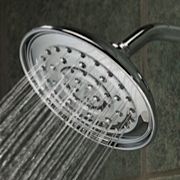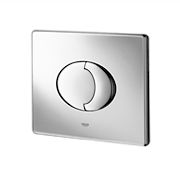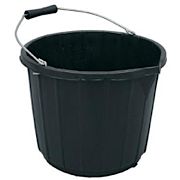This is the fourth article (part I, II, III) in a 6 part series on Saving Water. Living in Sydney, Australia I’m acutely aware of the value of this precious resource.
 No matter where you live, there are a number of ways you can save water in the house you already have. There are many excellent environmental reasons for doing this, but you’ll also benefit from something much more tangible – you’ll save money.
No matter where you live, there are a number of ways you can save water in the house you already have. There are many excellent environmental reasons for doing this, but you’ll also benefit from something much more tangible – you’ll save money.
When it comes to saving water around the home, there are three basic approaches :
- reduce the amount of water you use
- repair leaking plumbing fixtures
- reuse household water
Lets take a look at each of these.
Reduce the amount of water you use
This one is perhaps the most obvious – simply use less. However, as the idea is to use less water without reducing your standard of living, it takes a little thought. After all, water is very much a part of our lives now.
Reduce the amount used for bathing : Whenever possible, opt for a shower rather than a bath (of course an occasional long, hot bath is great – but think of it as a rare treat, not a daily necessity). Try to keep the showers down to a reasonable time – 4 or 5 minutes.
NB : Some low-flow shower heads are also well worth considering. As they vary quite a bit, try out a few whenever you get the chance (when you’re staying in a hotel, at the airport, at a friend’s house). The good ones are virtually indistinguishable from standard shower heads, but use much less water. It’s worth the effort.
Shower with one of your children, or bathe two of them together : Naturally this will depend on several things, but if the option is there; take it. You’ll use much less water.
Reduce the amount used for washing clothes : If you’re in the market for a new washing machine, consider the most water-efficient model available. Although it will most likely cost a little more to begin with, you’ll be saving money for many years to come.
NB : Front-loading machines are generally more water and power efficient than their top-loading cousins (although there are exceptions).
Reduce the amount used for washing clothes, using your existing machine : Not ready for a new machine? There are still things you can do. Try these :
- skip additional rinse cycles
- if the machine has a ‘save suds’ option, do a couple of loads
- use the economy cycle when available
- try to avoid washing one thing at a time – if you urgently need to clean something, put a few other things in with it
 Reduce the amount used for flushing the toilet : Once again, if you’re in the market for a new loo; you have a range of options available. Low-flush, dual-flush, composting and so on. Your choice really comes down to price, availability, and the one you most like the look of. It’s a personal thing.
Reduce the amount used for flushing the toilet : Once again, if you’re in the market for a new loo; you have a range of options available. Low-flush, dual-flush, composting and so on. Your choice really comes down to price, availability, and the one you most like the look of. It’s a personal thing.
That said, if you’re about to go bathroom shopping; begin by looking at the dual-flush options. Good water savings, and a massive variety of styles.
Reduce the amount of water used for flushing the existing toilet : Perhaps you’re renting, or there’s simply nothing wrong with the toilet you already have. There are still a couple of things you can do.
- put a plastic bottle (filled with water) in the cistern – you’ll use less water per flush. Alternately, anything of a similar size and weight is fine; you can just use a brick.
- there are many devices available which will control the length of each flush. The toilet is flushed only for the length of time the button is held down – much easier to control. These are cheap – starting at around $10.
Repair leaking plumbing fixtures
A dripping tap or toilet is not only incredibly annoying to listen to; it can waste around 200 litres per day. That adds up in a hurry.
Fortunately they’re often quite easy to fix. If you’re DIY-inclined, take a look at the following video which demonstrates the process of fixing a leaky tap.
[youtube 2WVDV6TXgwQ]
NB : If the problem is simply that the faucet is never turned off properly, just take a look at some of the newer handles on offer. There’s no need to replace the whole thing.
Reuse household water
There are many, many ways in which to do this. If you’re keen to set up your own greywater system, great. You’ll love next week’s article.
Even without going that far, however, there are still things you can do. And these really do make a difference.
 Collect the cold shower water : I’m sure you know the drill. When it’s time to take a shower, you turn it on and wait for it to warm up. In the meantime, a considerable amount of perfectly good cold water goes down the drain.
Collect the cold shower water : I’m sure you know the drill. When it’s time to take a shower, you turn it on and wait for it to warm up. In the meantime, a considerable amount of perfectly good cold water goes down the drain.
Simply grab a bucket and collect the water before it warms up. After your shower, just pour the cold stuff on the garden.
NB : Enjoying a bath? Keep the bucket handy, and when the water cools down; again pour it on the garden.
Redirect the washing machine excess : Once washing machines use their water, the excess is simply thrown down the drain. Instead of the short, flexible pipe which does this; attach a longer garden hose and direct the water to the desired location.
Many dehumidifiers afford the same possibility.
Other ways to save water around the house
Although there are several ideas above, there are actually a number of other ways to save water in your home. A few things to consider :
- use the economy setting on your dishwasher
- only use the dishwasher when it’s full (for small or single-person households, the split drawer options are great)
- fill the kettle only as much as you need at the time (more kettle-centric ideas here)
- when peeling or washing vegetables, use a water-filled bowl rather than a running tap
- when brushing your teeth, turn the water on/off as required (rather than leave it running)
- install aerators in kitchen and bathroom taps
Final thought on saving water around the house
These changes really do work. As an example, a report released recently noted that Sydneysiders now use less water than in 1974 – despite the population growth. That’s a massive reduction.
This is the fourth article in this series on Saving Water. If you missed the previous pieces, you can grab them here :
Comments are closed.